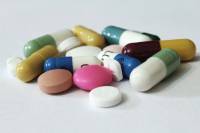
06 Oct Number of Emergency Room Visits for Medication Harms Increases with Age
MedicalResearch.com Interview with:

Dr. Budnitz
Dr. Daniel S. Budnitz MD MPH CAPT, USPHS
Division of Healthcare Quality Promotion
Director, Centers for Disease Control and Prevention’s Medication Safety Program
Atlanta, Georgia
MedicalResearch.com: What is the background for this study?
Response: Medications are generally safe when used as prescribed or as directed on the label, but there can be risks in taking any medication. Adverse drug events are harms resulting from the use of medication.
The risk of adverse drug events is highest among older adults and very young children. Older adults have higher risks because they typically take more medications and are more likely to have underlying medical conditions. Very young children have higher risks because they often find and ingest medications meant for others.
Previous studies of medication safety have focused on harm from medications when taken for therapeutic reasons. Separate studies have focused on harm from specific types of non-therapeutic use (taking medications for recreational use or self-harm). This study examined the number of emergency department (ED) visits that resulted when people who took medications for any reason – as directed by a clinician or for other reasons, including recreational use or intentional self-harm.
MedicalResearch.com: What are the main findings?
Response: In the years 2017-2019, an estimated 6 out of 1,000 individuals in the United States were treated in EDs for acute medication-related harms (1 out of 167 each year).
The number treated for harms due to therapeutic medication use was very similar to the number found approximately 5 years earlier (4.2 per 1,000 population in 2017-2019 compared with 4.0 per 1,000 population in 2013-2014).
The rate of ED visits for harms due to therapeutic medication use increased with age, peaking among those 75 years of age or older (16 per 1,000 population or 1 out of 62 each year).
When considering all types of medication-related harms; however, the rate of ED visits was similar for age groups from 15 through 64 years of age. What differed was the intended use for medications and the specific medications involved for each age group.
Medication-related misuse, abuse, or self-harm caused approximately 62% of ED visits for medication-related harms among those aged 15-24 years, but only 22% of visits among those aged 55-64 years. Among those aged 15-24 years, the leading cause of ED visits for medication-related harm was misuse, abuse, or self-harm involving alprazolam (9%), a benzodiazepine used to treat anxiety. Among those aged 45-64 years, the leading cause of ED visits for medication-related harm was therapeutic use of insulin (11%) which can cause serious hypoglycemia in patients with diabetes.
MedicalResearch.com: What should readers take away from your report?
Response: Identifying the most common medication-related harms for patients of different ages can help target prevention efforts.
Among patients 45 years of age and older, therapeutic use of anticoagulants (blood thinners) and diabetes medications were the most common causes of ED visits for medication-related harms.
Among patients 15 through 44 years of age, misuse, abuse, or self-harm involving benzodiazepines (used to treat anxiety and insomnia) was the most common cause of ED visits for medication-related harms.
Among children younger than 5 years of age, therapeutic use of antibiotics and unsupervised ingestions of medications were the most common causes of ED visits for medication-related harms.
MedicalResearch.com: What recommendations do you have for future research as a result of this work?
Response: Additional research can help identify the most effective ways to reduce the common causes of ED visits for medication-related harms in each age group.
For older adults, optimizing both the safety and effectiveness of anticoagulants and diabetes medications continues to be a challenge. New oral anticoagulants (for example, apixaban and rivaroxaban) have lower rates of bleeding complications and new diabetes medications (e.g., SLGT-2 inhibitors and GLP-1 receptor agonists) have lower rates of hypoglycemia; nonetheless, bleeding from anticoagulants and hypoglycemia, especially among older adults, remain the leading cause of acute adverse events leading to ED visits. Further research should explore which approaches to medication stewardship, medication monitoring, patient selection, and patient education most reduce the occurrence of these adverse events.
These new data on ED visits for medication-related harms re-emphasize the role that patients play in choosing to take medications outside of medical advice. Further research should explore which are the most effective harm reduction approaches when young adults and middle-aged adults intentionally misuse benzodiazepines, opioids, and over-the-counter medications (e.g., naloxone distribution programs). Can screening tools that accurately identify patients who are likely to misuse medications or self-harm with medications be coupled with effective prevention?
MedicalResearch.com: Is there anything else you would like to add?
Response: Among young children, interventions to reduce medication-related harms are showing progress. Antibiotic stewardship programs have reduced the number of antibiotics prescribed. Enhanced child safety packaging for liquid medications (e.g., flow restrictors added to the necks of medication bottles) has reduced the number of serious ingestions. Hopefully, innovative approaches like these can be applied to the most common causes of medication harms among patients of all ages.
No conflicts to disclose
Citation:
Budnitz DS, Shehab N, Lovegrove MC, Geller AI, Lind JN, Pollock DA. US Emergency Department Visits Attributed to Medication Harms, 2017-2019. JAMA. 2021;326(13):1299–1309. doi:10.1001/jama.2021.13844
[wysija_form id=”3″]
[last-modified]
The information on MedicalResearch.com is provided for educational purposes only, and is in no way intended to diagnose, cure, or treat any medical or other condition. Always seek the advice of your physician or other qualified health and ask your doctor any questions you may have regarding a medical condition. In addition to all other limitations and disclaimers in this agreement, service provider and its third party providers disclaim any liability or loss in connection with the content provided on this website.
Last Updated on October 6, 2021 by Marie Benz MD FAAD
